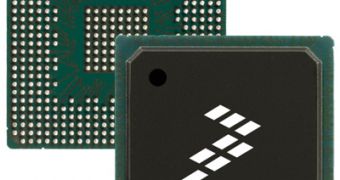As the netbook market continues to grow, more companies appear to show interest in a device that marked the past year as one of the most successful products on the market. Despite the fact that Intel has been a major player in the new market, the leading chip maker, headquartered in Santa Clara, California, is expected to face new competitors, as both VIA and, more recently, Freescale are expected to announce new processors, designed to take on the requirements of the emerging netbook market.
According to the most recent details on the Internet, Freescale Semiconductor is expected to make its debut in the netbook market with the announcement of a new, ARM-based chip, part of the company's i.MX line. Said I.MX51 processor is expected to be featured in devices such as netbooks and low-cost laptops that are designed to provide their users with the very basics in computing performance, like Internet-access or office-related applications. With the new processor, Freescale is trying to drive the average price tag of netbooks down to the $199-range. Currently, Atom-powered netbooks are priced at around $299, which makes Freescale's upcoming product a serious competitor.
“Because the primary function (of a Netbook) is accessing the Internet, Linux and Firefox are a good operating system and application for that purpose,” Glen Burchers, director global marketing for Freescale's consumer products group, said in an interview.
Intel and Freescale's perspectives on the concept of netbooks, appear to be similar, as both companies see the product as a secondary system, designed for Internet access and basic computing applications.
Freescale is said to have been collaborating with Pegatron, a wholly owned ASUS subsidiary, to develop a reference design that boasts a 1GHz ARM Cortex A8-based i.MX51 processor, Canonical's Ubuntu operating system, Adobe's Flash Player software and a new power management chip, in addition to the SGTL5000 ultra-low power audio codec. Volume production for the i.MX51-powered device is planned for the second quarter of 2009.

 14 DAY TRIAL //
14 DAY TRIAL //